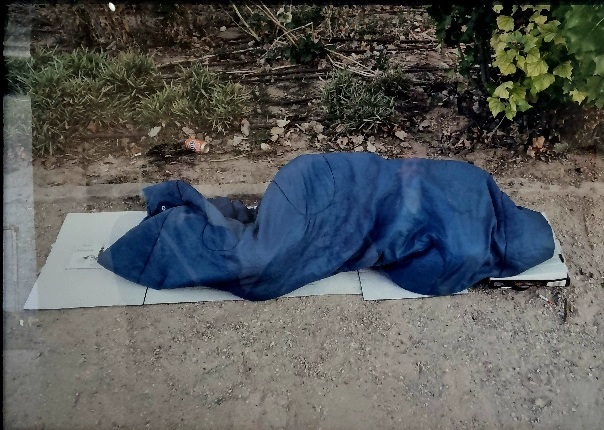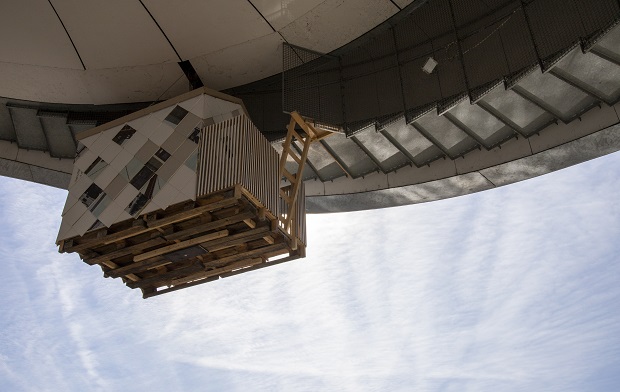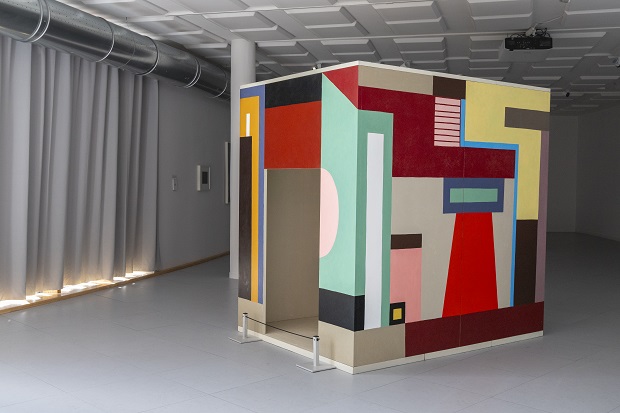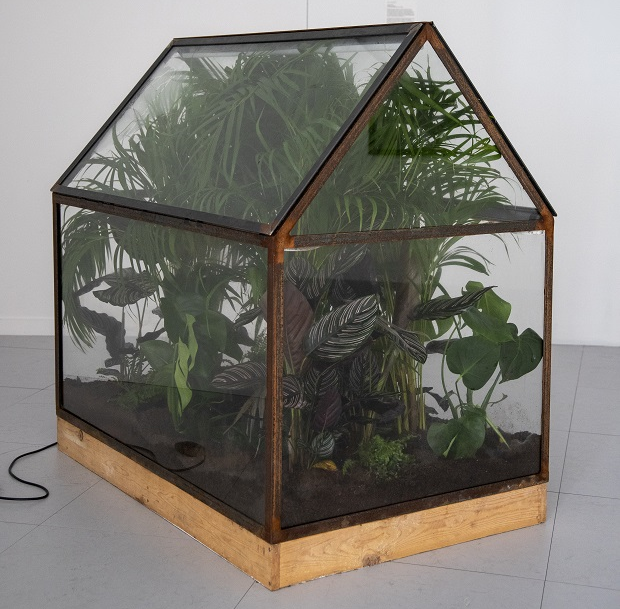- Daily & Weekly newsletters
- Buy & download The Bulletin
- Comment on our articles
A place of refuge and reflection: Contemporary art show ‘Cabane’ at Le Delta in Namur
Cabins, huts, shacks and treehouses… these temporary shelters evoke a disparate and imaginary world, from childhood fantasies to writers’ retreats and migrant dwellings.
They are also a longstanding source of inspiration for artists, which is the premise of the highly-original exhibition Cabane at Le Delta in Namur. Some 23 Belgian and international artists present 30 works that explore a range of topics, from the environment and migration to social and political issues.
For curator Anaël Lejeune it is a subject that has seldom been tackled, despite the growing trend for tiny dwellings, which represent “the idea of a return to a more simple and less complex life”.
The art historian came up with the idea for the show after observing his children constructing a make-shift cabin in their home during lockdown. While the “safe space” they created was a natural reaction to the pandemic, for artists the concept of small semi-permanent constructions is imbued with emotion, abstraction and symbolism.

From playful structures to poetic fantasies and photos of pitiful sleeping arrangements for the homeless (pictured, Mathieu Pernot's migrant series), these works offer multiple visions of freedom, refuge and resistance. Far from a nostalgic fulfilment of childhood fantasy, this is a timely display of contemporary art delving into a rarely explored aspect of human life.

The exhibition fills two of the arts centre’s floors while also spreading into its architecturally fascinating rotunda space with Adrien Tirtiaux’s Mon beau tambour (pictured) as well as the breathtaking panoramic rooftop.
Among the introductory works are Rotterdam studio Atelier Van Lieshout’s Study book skull, a cocoon-like structure representing a mental and physical retreat. Meanwhile, Maison sac a dos ou Habit(acle) a child’s plastic tent (pictured, main image) by Chalisée Naamani, shows the Franco-Iranian artist’s re-purposing of textiles to comment on human interaction with the environment.

An important explanatory installation is Cascade, Cabane en cascade by Jacqueline Mesmaeker. Cascading columns of words – plucked from books by classic authors such as Lewis Carroll – are affixed to the wall, spelling out the word ‘Cabane’. In a second work by the late Belgian artist, the video La Fée dans la Guérite screens black-and-white images of her grandson running around a pavilion in a park.

Milan-based French artist and designer Nathalie Du Pasquier has perfectioned brightly-hued cabins that are decorated inside and out with her joyful geometric designs. Una stanza bianco perla (pictured) has a childlike appeal while dynamically exploring questions about objects and space, figuration and abstraction.
At first glance, the twisted patchwork quilts draped over three chairs suggest a carefree moment of play. Yet Et il y eut un grand nuage Belgian Marianne Berenhaut is a chilling evocation of the Jewish artist’s wartime childhood experience. She had to hide with her twin brother in a Catholic orphanage after their parents were deported to Auschwitz. In all her artworks, she employs a singular visual language to evoke trauma, survivor’s guilt and memory.

An equally darker atmosphere occupies American photographer Gregory Crewdson’s The Shed (pictured), a large-scale work of a barely-clothed mud-spattered young female. She is viewed through a door frame from the interior of a dilapidated wooden cabin; the realistic image capturing an eerie and strange existence. It recalls the tradition of European fairytales that address the initiation of adolescents into the world of adults.

An enclosed glasshouse filled with exotic vegetation draws visitors’ attention when it sporadically emits smoking fumes. Renowned for his graphite work, Belgian artist Raphaël Decoster’s Naturelle Katastrof (pictured) typifies his interest in nature and its response to increasing urbanisation.
Migrants’ encampments in Calais are the focus of Swiss photographer Jean Revillard in his documentary image Jungles. Cabin and hut structures take on another identity when they are no longer a temporary form of shelter. An elaborate tent constructed by migrants while waiting to embark on life-threatening Channel crossings is illuminated in this glossy image fitting of a publicity shot. Revillard deliberately highlights the acute failure of migration policy by treating the subject matter in such beautiful fashion.

Up on Le Delta’s rooftop, overlooking the city’s confluence of two rivers and the its imposing ancient citadel, is located a retro installation by the late American designer Ken Isaacs. Microhouse (pictured) dates from 1972 and recalls his pioneering and visionary work questioning home ownership.
It exemplifies the rich fertility of the exhibition’s theme. There is a fascinating ambivalence in the idea of cabins as both a source of comfort and a painful confrontation with the world. Despite the deeper meanings attached to many of the works, the show remains accessible to all ages.
Accompanying the exhibition is an extensive catalogue featuring a series of essays of topics as well as a programme of events. They include a special family day on 18 May and guided tours and artist performances during the Namur’s Nuit blanche on 23 May.
Cabane
Until 20 July
Avenue Fernand Golenvaux 18
Namur
Photos: ©Dardenne Xavier; Sarah Crew


















